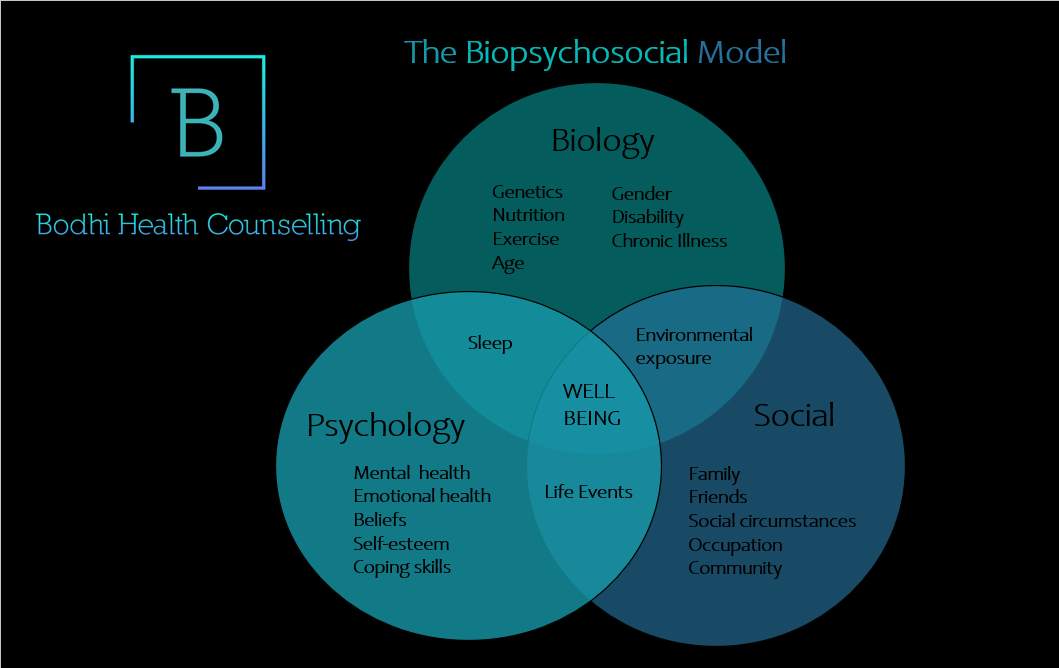What is the Biopsychosocial Model?
The Biopsychosocial model is a framework for understanding people as whole beings whose health is influenced by multiple, interconnected dimensions such as biology, psychology and social circumstances. It recognizes that all three dimensions are entwined. The model was first introduced in 1977 by George L. Engel and was the first to highlight the facets of health and focus on how they are interconnected.
The Bio in the biopsychosocial model stands for biology, which encompasses genetics, nutrition, sleep, physical exercise, exposure to environmental contaminants, age and gender. The Psycho in the biopsychosocial model stands for psychology, which includes mental and emotional health, self-esteem, beliefs, behaviour, moods, and coping mechanisms. The social in the biopsychosocial stands for social circumstances, which encompass your relationships with family and friends, social supports, occupation, and community.
None of these facets works in isolation, and together they make up our health as a whole. Each of these dimensions works synergistically, and each affects the other. Chronic stress, for example, can affect all three dimensions simultaneously. Chronic stress can impact your biology by manifesting as inflammation. It can affect your psychology by manifesting as anxiety and/or irritability, and it can affect your social circumstances by creating avoidance and/or friction in your social relationships. Furthermore, our personal strengths and weaknesses in any of these dimensions can either support or compound any problems that arise. Our minds, bodies and environments are dynamic; they involve complex interactions, and as such, all should be addressed as a whole when considering our personal wellbeing.


